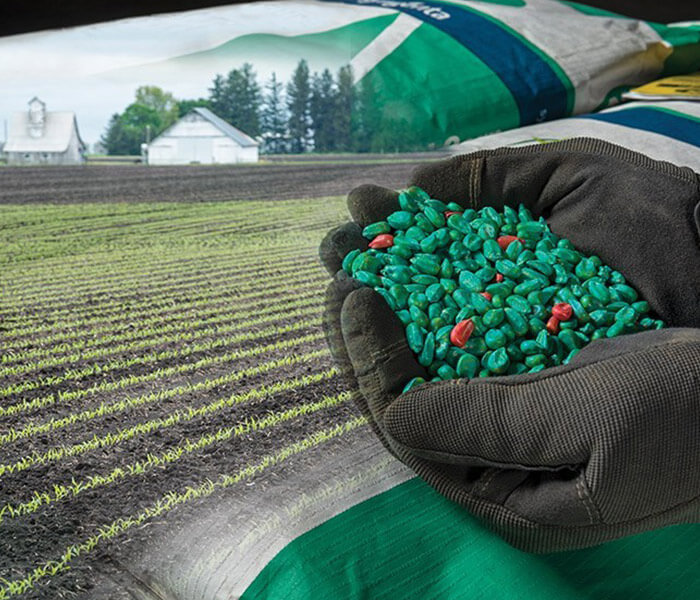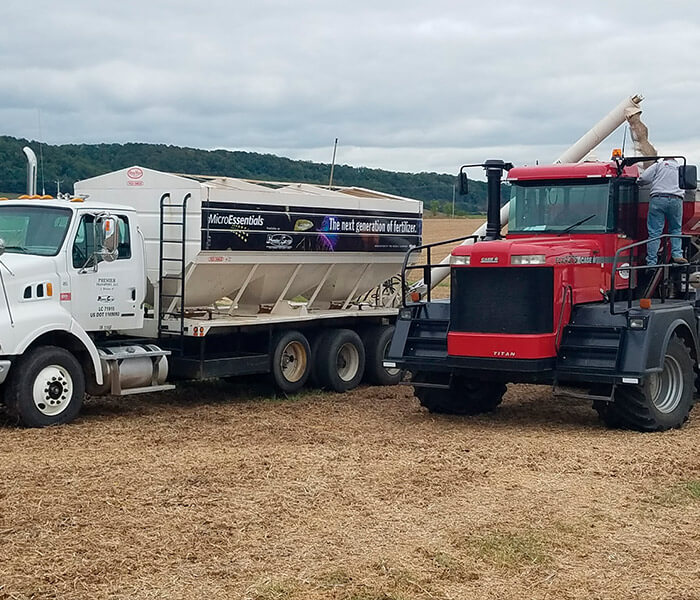Discover the 7 simple steps!
Syngenta Thrive 2020
By Darci Maulsby
Additions by Ken Jahnke
Set your sights on high yields with the decisions made during planning and planting.
Here are the seven top tips for starting the 2021 crop strong:
1. Select seed to match your needs. Don’t focus exclusively on seedling vigor and yield potential. Economics are tight, but you need to plant the right traits that put you in a favorable position for success. The right traits for your needs are a powerful tool in your toolbox.
2. Choose the right seed treatments. Lowering plant stress is key to helping crops maximize their genetic potential. Seed treatments can play a big role in controlling insects and diseases. They also promote a more robust root system to get the crop off to a strong start. Warden CX treatments from Windfield United fight against damage from certain insects, seedborne diseases and seedling diseases. In soybeans, Warden CX helps counter possible negative field stresses that early planting can promote, which reduce the plant’s ability to reach its genetic yield potential.
For Sudden Death Syndrome (SDS). Saltro® fungicide seed treatment, delivers superior protection against and robust activity against nematodes, without any of the stress soybeans experience with older technologies like ILEVO®.
3. Control compaction. Limiting traffic patterns in the field is smart. So is patience. The sidewall compaction that can occur if the crop is mudded in will limit the access to water and nutrients that crop roots need to support healthy growth.
4. Manage cover crops. Burndown timing is critical, especially with a cover crop like winter rye. Let it grow too long, and it will rob yield potential. When winter rye is not killed and green tissue is in the field when the crop is emerging, losses of 10 to 40 bushels per acre have been seen from Syngenta plot data near York, Nebraska. Research also shows a loss of 9 pounds of nitrogen per week, on average, over a three- to four-week period if rye is allowed to grow 12 inches tall. That’s the equivalent of losing $18 an acre of nitrogen.
5. Stop weeds before they start. All plants compete for water, space and nutrients. Remember the 3-3-1 rule. A 3-inch-tall weed every three days can take 1 inch of water out of the soil. An effective preemerge system is essential, but don’t let cost deter you. “It often costs three times more to kill a weed later than to prevent weeds right up front. Weed escapes also build up the weed-seed bank, which leads to more trouble later.
Acuron® corn herbicide, which contains the exclusive active ingredient — bicyclopyrone — and delivers 5 to 15 more bushels per acre on average over any other herbicide.
Acuron offers a unique combination of powerful weed control, longest-lasting residual and proven crop safety that results in maximum performance on tough, yield-robbing weeds. Less weed competition translates into more nutrients, sunlight and water available for the growing corn crop, which leads to more bushels and ultimately extra revenue potential. The bottom line is clean fields maintain yields.
6. Take advantage of fungicides. Fungicides may also offer an excellent potential return on investment, even with lower commodity prices. Syngenta products, like Miravis® Neo fungicide for broad-spectrum disease control in corn and soybeans. Fungicides help crops handle stresses like drought and heat better, which translates into yield.
7. Find trusted partners. As fast as things change in agriculture, it can be challenging for growers to keep up with everything they need to know to make smart management decisions. Contact your Premier Agronomist to gain insights you may not discover on your own. Working with a lot of different people they gain a wide perspective and an objective look at solutions that can work for you.
* When applied preemergence and at full label rates. Acuron yield advantage range based on 2016 Syngenta and university trials comparing Acuron to Corvus®, Resicore®, SureStart® II and Verdict®. For more information on Acuron versus an individual product, ask your Syngenta representative.
Give your Premier Agronomist a call today!?




